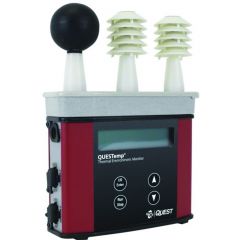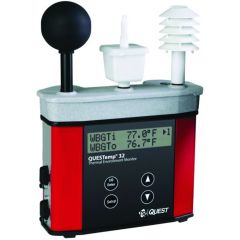Heat Stress


What Is Heat Stress?
Heat stress is a condition that occurs when the body is unable to maintain a healthy temperature due to exposure to hot temperatures, especially in combination with strenuous activity or high levels of humidity. People who work outdoors or in confined, hot environments are particularly susceptible to heat stress and heat-related illnesses.
Levels of Heat Stress: Heat Stress vs. Heat Exhaustion vs. Heat Stroke
There are three levels of severity of heat stress: heat cramps, heat exhaustion, and heat stroke.


Heat Cramps
Heat cramps are the mildest form of heat stress. They can occur when workers are performing strenuous activities in hot environments. Excessive sweating as a result of activity and heat depletes the salt and moisture in the body, and these low salt levels can lead to painful muscle cramps.
Heat cramps may also be a symptom of heat exhaustion.
Heat Exhaustion
Heat exhaustion is an illness caused by overheating and the loss of water and salt caused by excessive sweating. Without prompt treatment, heat exhaustion can lead to heat stroke.
Heat Stroke
Heat stroke is the most serious of all heat-related illnesses. It occurs when the body can no longer regulate its temperature. At that stage, without the ability to sweat, the person’s core temperature rises rapidly, and they are unable to cool down.
During heat stroke, a person’s body temperature can rise to 103°F or higher within just a few minutes.
Signs & Symptoms of Heat Stress
An important part of preventing heat stress is recognizing the signs and symptoms of heat-related illnesses. While general signs include fatigue, dizziness, fainting, a weak or fast pulse, clammy or pale skin, and an increase in workplace incidents, there are some symptoms unique to each level of heat stress.


Heat Cramps Symptoms
Signs that someone may be experiencing heat cramps include:
- ● muscle cramps, spasms, or
- ● pain in the arms, legs, or abdomen.
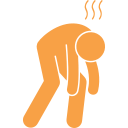

Heat Exhaustion Symptoms
Signs of heat exhaustion may include the following symptoms:
- ● Headache
- ● Nausea
- ● Excessive sweating
- ● Dizziness
- ● Weakness
- ● Rapid pulse
- ● High body temperature
- ● Irritability
- ● Extreme thirst
- ● Heat cramps
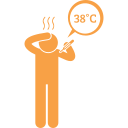

Heat Stroke Symptoms
Signs of heat stroke may include the following symptoms:
- ● Confusion
- ● Slurred speech
- ● Altered mental status
- ● Hot, dry skin
- ● Profuse sweating
- ● Very high body temperature
- ● Seizures
What Are the Effects of Heat Stress?
Exposure to extreme heat in the workplace can result in serious health complications, life-threatening conditions, permanent disability, or even death if the person affected does not receive prompt medical treatment. Heat stroke is the most severe heat-related illness and can be fatal without emergency treatment. Burns may also occur due to contact with steam or hot surfaces. Additionally, heat stress increases the risk of occupational accidents or injuries that may be caused by sweaty palms, dizziness, fainting, fogged-up safety glasses, confusion, or muscle cramps.
Heat Stress in the Workplace
Hot work conditions are a threat to the health and safety of workers across the United States. Every year, thousands of workers become ill and dozens of people lose their lives due to heat stress in the workplace. Workers who are exposed to hot environments or high temperatures have a higher risk of developing heat-related illnesses. Some workplaces, occupations, and individual health conditions can increase that risk further.


Occupation Risk Factors
Outdoor workers are especially at risk for heat stress. These occupations include the following:
- ● Emergency responders, including firefighters
- ● Construction workers
- ● Farmers
- ● Hazardous waste site workers
Workers who spend time in confined, heated spaces also have higher heat stress risk levels, such as those who work in the following environments:
- ● Bakeries
- ● Factories
- ● Boiler room workers
- ● Oil and gas well operators
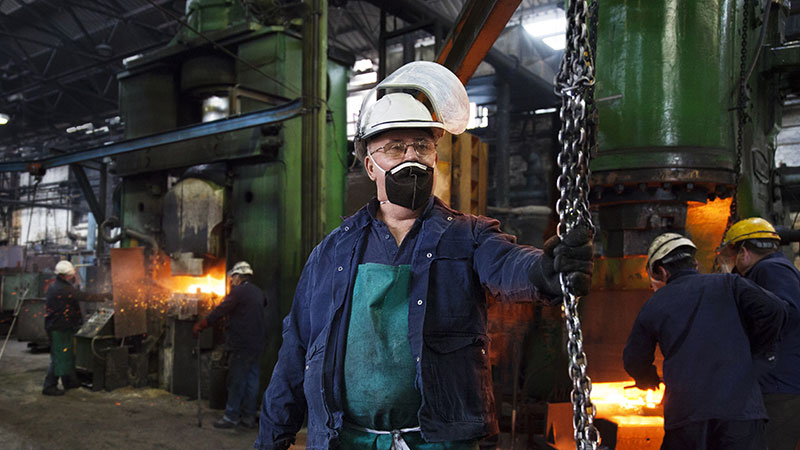

Individual Risk Factors
Health or lifestyle factors put some workers at a greater risk of heat stress, including the following:
- ● Age (65 years or older)
- ● Weight
- ● Underlying health conditions (high blood pressure, heart disease, etc.)
- ● Cardiovascular fitness levels
- ● Existing burns along the body
- ● Low intake of liquids
- ● Drug use
- ● Medication (some are affected by extreme heat)
Wearing clothing that inhibits the body’s ability to lose excess heat, such as some types of personal protective equipment (PPE)
What Are the OSHA Heat Stress Standards?
The Occupational Safety and Health Administration (OSHA) has developed standards regarding safety in the workplace, specifying in the General Duty Clause (Section 5(a)(1)) of the Occupational Safety and Health Act of 1970 that employers must ensure workplaces are free from hazards that are likely to cause harm or death. Courts have since determined that the General Duty clause includes heat-related hazards that can lead to heat stress or other heat-related illnesses.
In addition, some state-level OSHA offices have developed their own standards regarding exposure: California, Colorado, Minnesota, Oregon, and Washington.
The National Institute for Occupational Safety and Health (NIOSH) has also published recommendations for how employers can prevent heat-related illnesses in the workplace. The standard, Criteria for a Recommended Standard: Occupational Exposure to Heat and Hot Environments, guides heat stress standards across industries.
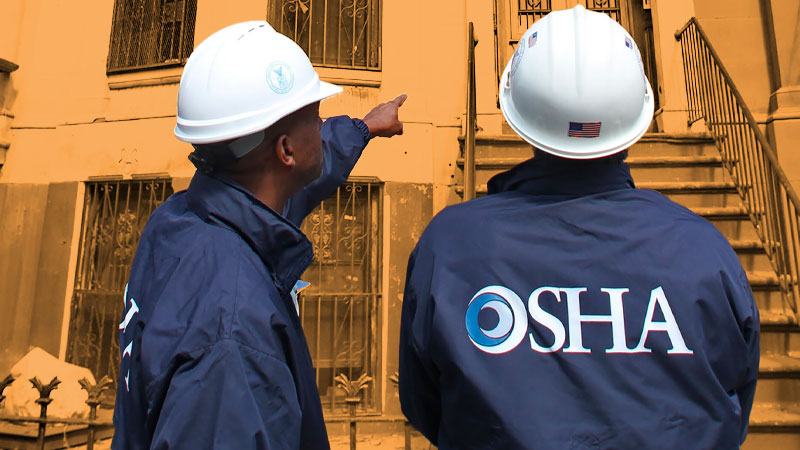

Heat Stress Safety Tips: Preventing Heat Stress in the Workplace
Employers and workers alike must be prepared to recognize the signs and symptoms of heat-related illnesses and prevent heat stress. By following these recommended heat stress safety tips, workplaces can reduce the risk of heat stress and respond more quickly when heat-related illnesses occur.
Monitor Heat Stress
Installing heat stress monitors in a hot workspace or encouraging workers to wear personal heat stress monitors ensure employers are alerted when heat stress or metabolic conditions reach dangerous levels.
Take Frequent Breaks
Frequent breaks are important so that workers with elevated body temperatures can cool down. Encourage drinking plenty of water during the break, and ensure workers can rest in a shaded area or room with air conditioning.
Adjust Work Schedules
If possible, adjust work schedules so that the majority of activities are completed earlier in the morning or later in the evening to avoid the hottest parts of the day.
Use the Buddy System
Once workers are familiar with the symptoms of heat-related illnesses, implement a buddy system that encourages workers to monitor others for signs of heat stress. If they observe common symptoms or expect some is at risk of a heat-related illness, they can notify the appropriate parties and take action as quickly as possible.
Educate Workers & Supervisors About Heat Stress
Create safety courses, heat stress response documents, and other resources supervisors and workers can use to learn about heat stress, its causes, common symptoms, the different severity levels, and how to respond to instances of heat-related illnesses.
Modify Workplace Conditions
Some workplace environments can be modified to reduce the risk of heat stress. Adding proper ventilation, installing industrial fans or air conditioning, and ensuring there is adequate shade can create a safer workspace. Additionally, it is important to provide a cool, dedicated room or area where workers can take rest breaks, stay hydrated, and reduce elevated body temperatures as needed.
Acclimatize to the Heat
Acclimatization is the process of gradually increasing workers’ exposure to hot conditions over a one- to two-week period so their bodies can better acclimate to the environment. New workers will need more time to acclimatize than experienced workers.
For new workers, OSHA recommends an acclimatization schedule with 20% exposure on Day 1 with a maximum increase of 20% on each additional day. For workers who have already had some exposure, the recommendation is to start with no more than a 50% exposure on Day 1, followed by 60% on Day 2, 80% on Day 3, and 100% on Day 4.
Keep a close eye as employees acclimatize fully to the hot environment.
Stay Hydrated
Provide access to cool (< 59°F), potable drinking water close to the working area. To achieve adequate hydration, workers performing moderate activities in the heat should drink one cup (8 oz.) of water every 15 to 20 minutes. If they will be working in the heat for more than two hours or if they are sweating excessively, hydrate with sports drinks containing balanced electrolytes.
Note that fluid intake should not exceed six cups (8 oz. each) per hour.
Additionally, avoid beverages that contain caffeine, alcohol, or high sugar levels, as these can contribute to dehydration.
Responding to Heat Stress: What to Do If a Worker Shows Signs of Heat Stress
If a worker is showing symptoms of heat stress, it’s important to remain calm and get help as soon as possible. Take the following steps to treat a worker suffering from a heat-related illness:
- ● Stay with the worker until help arrives
- ● Move them into a shaded or cooler area, if possible to do so safely
- ● Remove any outer clothing or personal protective equipment,
if possible to do so safely - ● Provide cool water for the worker to drink
- ● Apply ice or cold, wet cloths to the skin, especially on the
head, neck, armpits, and groin - ● Soak clothing in cool water
- ● Use a fan to cool them down or mist them with water
When in doubt, or if there are any indications the worker may be suffering from heat stroke (confusion, loss of consciousness, slurred speech, seizures, excessively hot skin, etc.), call 911.


Heat Stress Monitoring
To maintain the comfort and safety of workers, employers must have some type of heat stress monitoring system in place. Occupational heat exposure is a combination of several different factors, which can make it difficult to accurately measure without the proper equipment. These factors are divided into two categories that contribute to heat stress in the workplace: environmental heat and metabolic heat. Environmental heat is caused by hot surroundings, and metabolic heat is generated by the body in response to workload or physical activity levels.
Employers must use heat stress monitoring methods to assess both environmental and metabolic sources of heat in order to create a safe, comfortable workplace. Methods include calculating the wet bulb globe temperature (WBGT) of the workspace and accounting for the heat index.
Wet Bulb Globe Temperature
The WBGT measure is a combination of four factors:
- ● Ambient air temperature
- ● Relative humidity level
- ● Radiant heat sources (sunlight, ovens, furnaces, road surfaces, etc.)
- ● Air movement
This number assesses the environmental heat levels of a workplace.
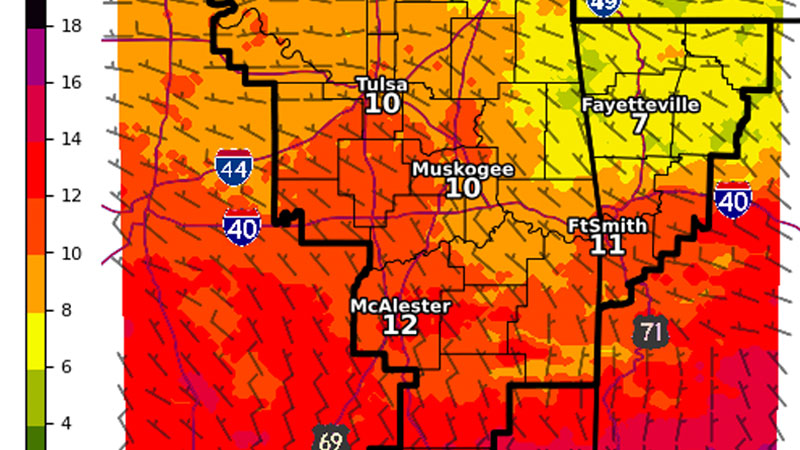

Heat Index
The National Oceanic and Atmospheric Administration branch of the National Weather Service has developed the heat index, which is another common method of measuring heat stress in work environments. The heat index represents both temperature and relative humidity to provide a more accurate representation of how temperature levels feel on the human body.
However, the heat index does not account for wind, sunlight, radiant heat, or physical activity, which means it does not provide a full picture of heat stress risks for workers.
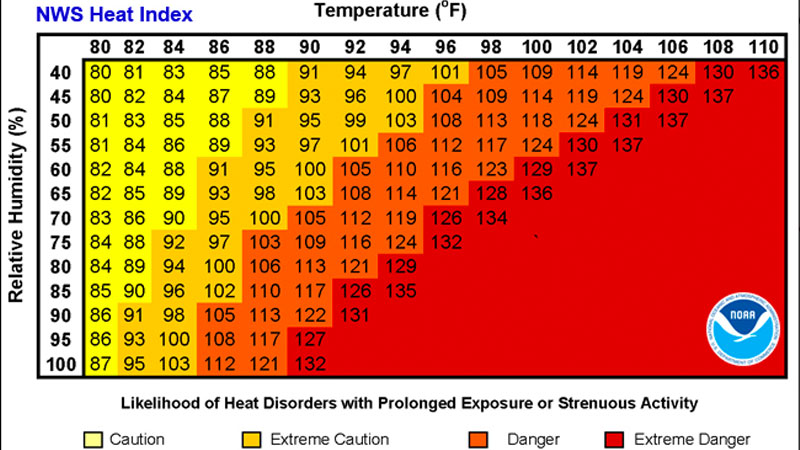

What Is a Heat Stress Monitor?
Heat stress monitors are essential tools in any work environment where workers are exposed to hot conditions. Depending on the device, they can accurately measure temperature, relative humidity, heat index, body temperature, and other calculations and then provide real-time alerts when measurements reach dangerous levels.
These devices come in a variety of different forms, from handheld or wearable monitors to fixed monitors. With the data they provide, employers are better equipped to identify and respond to instances of heat stress in the workplace
Industry-Leading Heat Stress Monitors
RAECO Rents offers high-quality heat stress monitoring equipment, including WBGT monitors and personal monitors that measure metabolic heat. These devices are ideal for indoor or outdoor environments where workers are at risk of heat stress.
Slate Safety BANDV2 Personal Heat Stress Monitor
The Slate Safety BANDV2 Personal Heat Stress Monitor alerts the wearer in real-time if they are at risk of heat stress or overexertion. Worn on the upper arm, this device measures data such as core body temperature, exertion levels, and heart rate to determine if the wearer is in danger of heat-related illnesses. By wearing a personal heat stress monitor, a worker will have enough time to take actions like drinking water or resting in a cooler area that can help prevent heat stress.
TSI QUESTemp Wet Bulb Heat Stress Monitors
The TSI QuesTEMP line of WBGT heat stress monitors (TSI QUESTemp 46 Area Heat Stress Monitor with Waterless Wet Bulb and TSI QUESTemp 36 Datalogging Heat Stress Monitor with Displayed Stay Times) are designed to provide data that employers can use to monitor workplace heat exposure levels. These devices calculate a WBGT index value by recording ambient air temperature, radiant heat, humidity, and airflow, and they provide real-time data so that workers and supervisors can act in a timely manner based on the readings.
Get Started with Heat Stress Monitoring Equipment from RAECO Rents Today
At RAECO Rents, we have the latest heat stress monitoring equipment for industry professionals. Our goal is to provide you with the devices you need to quickly and accurately monitor heat in both indoor and outdoor workplace environments. With the data provided by our heat stress monitors, you can take action to protect your employees and help prevent heat-related injury.
When you rent equipment from RAECO Rents, you will receive clean, operable, high-quality instruments. We proudly offer an Instant-On guarantee and after-hour support, and we only charge you for the days you have the equipment in your hands—not when it is in transit to and from your location.
RAECO Rents is determined to make your rental experience easy every step of the way. Contact our rental service team today to order high-quality heat stress monitoring equipment.
Related Articles


Heat Stress in the Workplace: Updates from Oregon OSHA
Workplace heat stress or heat-related illnesses and injuries are dangerous conditions resulting from employees being exposed to extreme heat or high levels of humidity in their working environment. Every employer, supervisor, owner, and manager has a responsibility to monitor and prevent heat stress in the workplace.
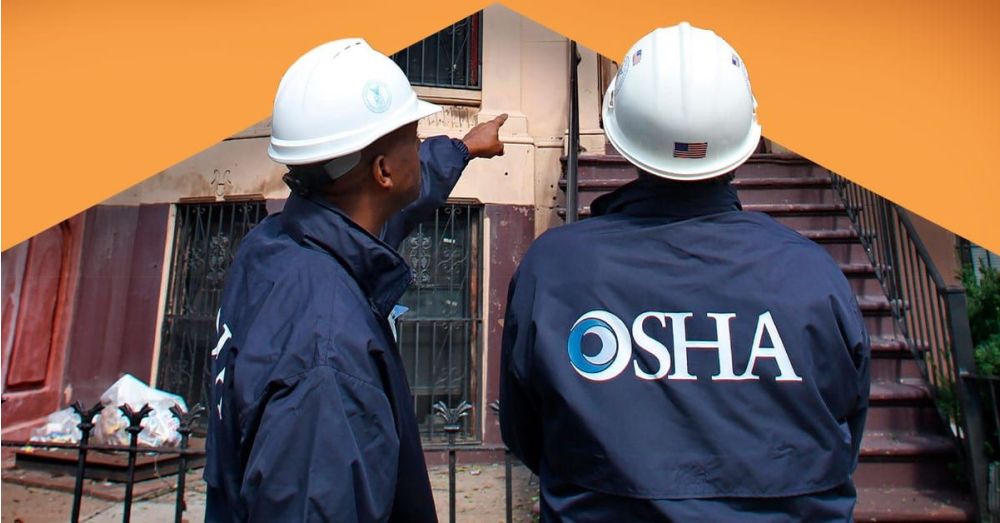

OSHA Regional Directive Updates & Emphasis Programs [2023 Updates]
Local Emphasis Programs (LEPs) are enforcement strategies designed and implemented at the regional office and/or area office levels. These programs are intended to address hazards or industries that pose a particular risk to workers in the office's jurisdiction.
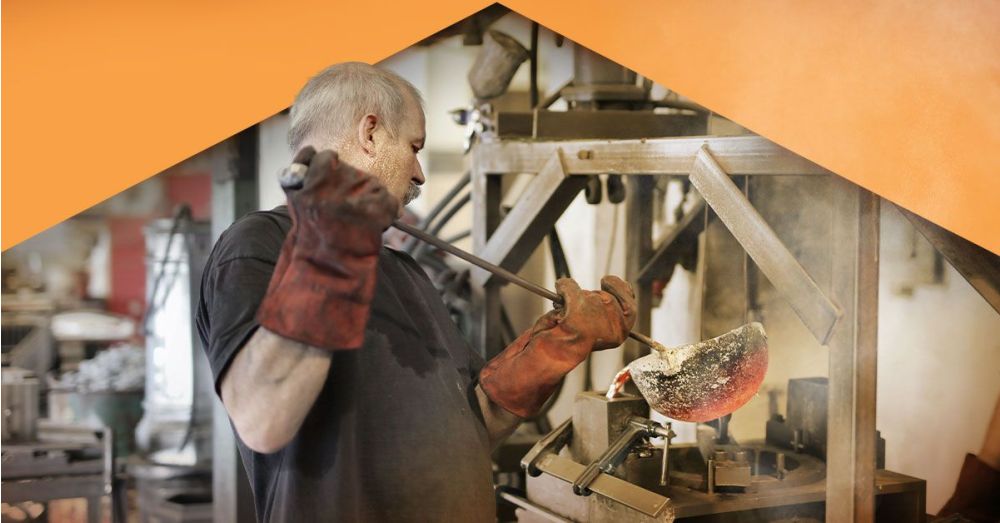

Monitoring and Preventing Heat Stress in the Workplace
Working in the heat is dangerous—every year, according to the Occupational Safety & Health Administration (OSHA), thousands of workers become ill working in hot or humid environments and there are dozens of heat-related fatalities in the workplace.


